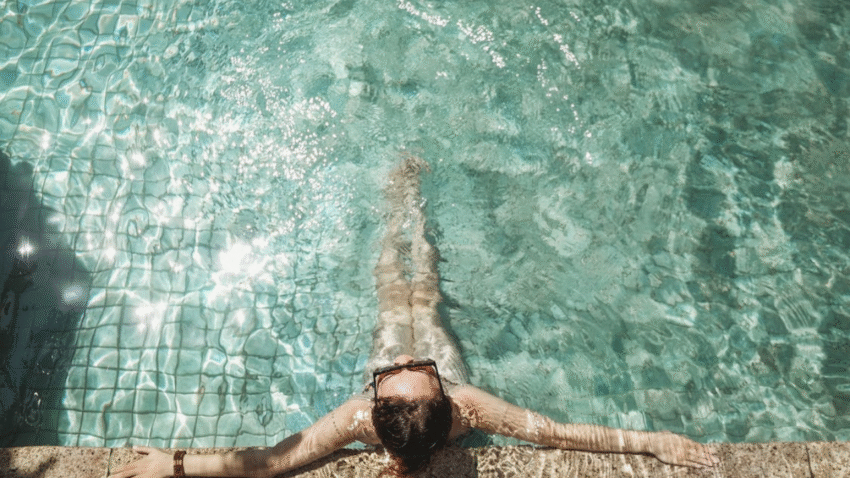Introduction
Want sparkling pool water with minimal effort? A well-maintained DE (diatomaceous earth) filter is your best friend. In this complete step-by-step guide, you’ll learn how to maintain a DE filter effectively to keep your pool water crystal clear. If your pressure is rising, water is cloudy, or cleaning takes forever, it’s time to give your DE filter the attention it deserves.
Why DE Filter Maintenance Matters
A DE filter offers the finest level of filtration among all pool filter types—capturing debris as small as 2–5 microns. But without proper care, even the best filter can lose efficiency.
Maintaining your DE filter ensures:
- Consistently clean, clear water
- Optimal water flow and circulation
- Longer filter and pump lifespan
- Reduced chemical usage due to cleaner water
Neglecting maintenance can lead to clogged grids, high pressure, and poor water quality—plus costly repairs down the road.
Step-by-Step Guide to Maintaining a DE Filter
1. Understand How a DE Filter Works
A DE filter contains internal grids coated with diatomaceous earth, a fine powder made from fossilized plankton. Water passes through these powder-coated grids, which trap dirt and debris before returning clean water to the pool.
There are three main parts:
- Filter tank
- Internal grid assembly
- Multiport or push-pull valve
2. Monitor the Pressure Gauge
Check your filter’s pressure gauge weekly. A clean DE filter typically runs at 8–12 psi (your system may vary). When pressure rises 8–10 psi above normal, it’s time to clean the filter.
Tip: Write down your system’s “clean start” pressure for reference.
3. Backwash the Filter (When Needed)
Backwashing removes dirty DE and trapped debris from the filter. Most pools need backwashing every 4–6 weeks or when the pressure gets too high.
How to Backwash a DE Filter:
- Turn off the pump.
- Set the multiport valve to “Backwash.”
- Turn on the pump for 2–3 minutes or until water runs clear in the sight glass.
- Turn off the pump.
- Set the valve to “Rinse” (if available) for 30 seconds, then return to “Filter.”
- Turn on the pump.
Important: After backwashing, you must replace the lost DE powder (see next step).
4. Add New DE Powder
Once you backwash the filter, the old DE powder is gone and must be replaced.
How to Add DE Powder:
- Mix the required amount of DE powder with water in a bucket to make a slurry.
- Slowly pour the slurry into the skimmer while the pump is running.
Dosage guide: Typically 1 lb. of DE per 10 square feet of filter area
(Consult your filter’s manual for exact requirements.)
5. Perform a Full Filter Cleaning (Every 6 Months)
Backwashing only removes loose debris. A full breakdown and cleaning is essential every 6 months or when water flow significantly decreases.
How to Clean a DE Filter Thoroughly:
- Turn off the pump and relieve pressure.
- Remove the filter lid and take out the grid assembly.
- Rinse the grids with a garden hose.
- Soak in a DE filter cleaner or a 1:1 solution of water and muriatic acid (if there’s scale or oils).
- Rinse again thoroughly.
- Reassemble the filter and add fresh DE powder.
Tip: Inspect grids for tears or damage—replace if necessary.
6. Lubricate the Filter O-Rings
O-rings around the tank lid, pressure relief valve, and fittings keep your system sealed and leak-free.
Every 6 months:
- Remove and inspect O-rings
- Clean with a cloth
- Apply a silicone-based pool lubricant
7. Check for Air Leaks or Drips
Leaks can introduce air into the system, causing priming issues and reducing performance. Common sources:
- Pump lid O-ring
- Unions or fittings
- Pressure relief valve
Solution: Tighten fittings or replace O-rings if bubbles appear in the return jets.
Common Mistakes to Avoid
1. Forgetting to Add DE Powder After Backwashing
Without DE powder, the grids are exposed and won’t filter effectively.
Solution: Always add the correct amount of DE powder immediately after each backwash.
2. Ignoring the Pressure Gauge
A clogged filter puts strain on your pump and results in poor circulation.
Solution: Backwash or clean the filter when pressure rises 8–10 psi above normal.
3. Using the Wrong Amount of DE
Too little DE allows dirt to clog the grids; too much can cause pressure problems.
Solution: Follow your manufacturer’s dosage instructions carefully.
4. Skipping Full Filter Cleanings
Backwashing isn’t enough—grease and scale can build up inside the filter.
Solution: Break down and deep-clean the filter every 6 months.
5. Using Household Lubricants
Never use petroleum jelly or grease on O-rings—it can degrade rubber.
Solution: Use a pool-safe silicone lubricant for all seals and gaskets.
Extra Tips & Pool Hacks
Mark Your Clean Pressure Level
Use a waterproof marker or tape on the pressure gauge to indicate your system’s clean starting pressure.
Keep Extra DE Powder On Hand
Always store a sealed bag of DE powder near the pool equipment—this makes post-backwash treatment quick and easy.
Use a Rinse Bucket for Cleaning Grids
Fill a large trash bin or tote with a cleaning solution for soaking grids during deep cleans. Saves time and keeps your workspace tidy.
Internal link: Want to learn about other filter options? Read our full guide on [How to Choose the Best Pool Filter Type].
Conclusion
Learning how to maintain a DE filter is key to keeping your pool water crystal clear and your equipment running efficiently. From monitoring pressure to regular backwashing and deep cleans, each step ensures your filter performs at its best all season long.
Final Tip: Set reminders for monthly checks and semiannual deep cleans—your pool will thank you with sparkling water and hassle-free maintenance.
